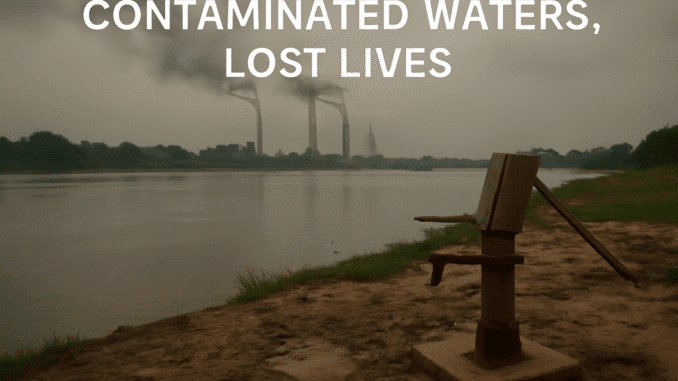
The SanvaadGarh | Odisha
Rivers should be lifelines, not waste channels. In Odisha’s coal and metal belt, the Bheden and Ib rivers now run as toxic threads, a direct consequence of unchecked corporate effluents and regulatory apathy.
A recent Central Ground Water Board (CGWB) report tabled in Parliament finds only 51% of sampled water in these rivers meets drinking standards – 16% is outright unsafe, riddled with excess nitrates, fluoride, chloride, sulphate, high TDS, and skewed pH. Industrial hubs like Katikela and wells in Jharsuguda fail drinking water norms. The industrial drain Safainala, which empties into the Bheden, reveals TDS readings as alarming as 863 mg/L, far above IS:10500 safety thresholds. Pollution isn’t theoretical; it’s daily.
Industries Guilty, Authorities Silent
Despite clear warnings from the CGWB, fly ash dumping linked to power plants continues to blanket fields and seep into water sources. Advocates such as NGT lawyer Shankar Pani and environmental activists point out flagrant violations: state authorities have directed fly ash bans along riverbanks, yet enforcement lags woefully. Odisha’s State Pollution Control Board (OSPCB) officially flagged three major industrial pollution hotbeds, but meaningful crackdowns remain absent.
Mahanadi’s Dirty Twin, and Eighteen More
OSPCB’s annual environmental audit also brands the Mahanadi and Brahmani rivers “critically polluted,” with hazardous BOD and coliform spikes at 16 monitoring sites. Statewide, 19 river stretches appear on the CPCB’s list of polluted waters stretching from Kathajodi to Serua and Kuakhai, each bearing scars of industrial spillage.
SanvaadGarh Demands
- Immediate scientific audit and halt on effluent discharge until water quality improves.
- Public display of water sample data from all borewells and hand pumps along Bheden and Ib.
- Enforce CGWB’s fly ash ban—remove or seal ash ponds near rivers.
- Penalize polluting units under the Water Act and BOD norms.
- Guarantee a public right to clean water with enforceable standards in industrial zones.


Be the first to comment